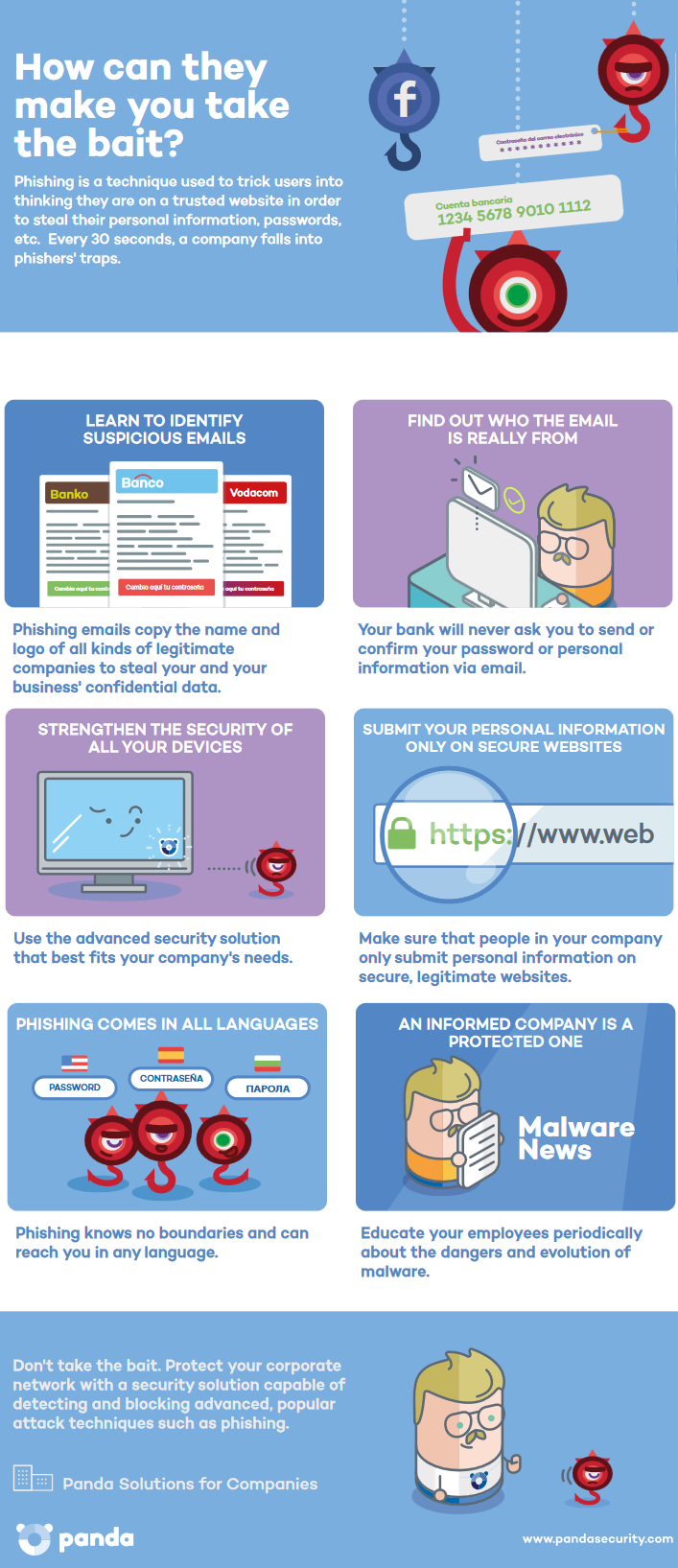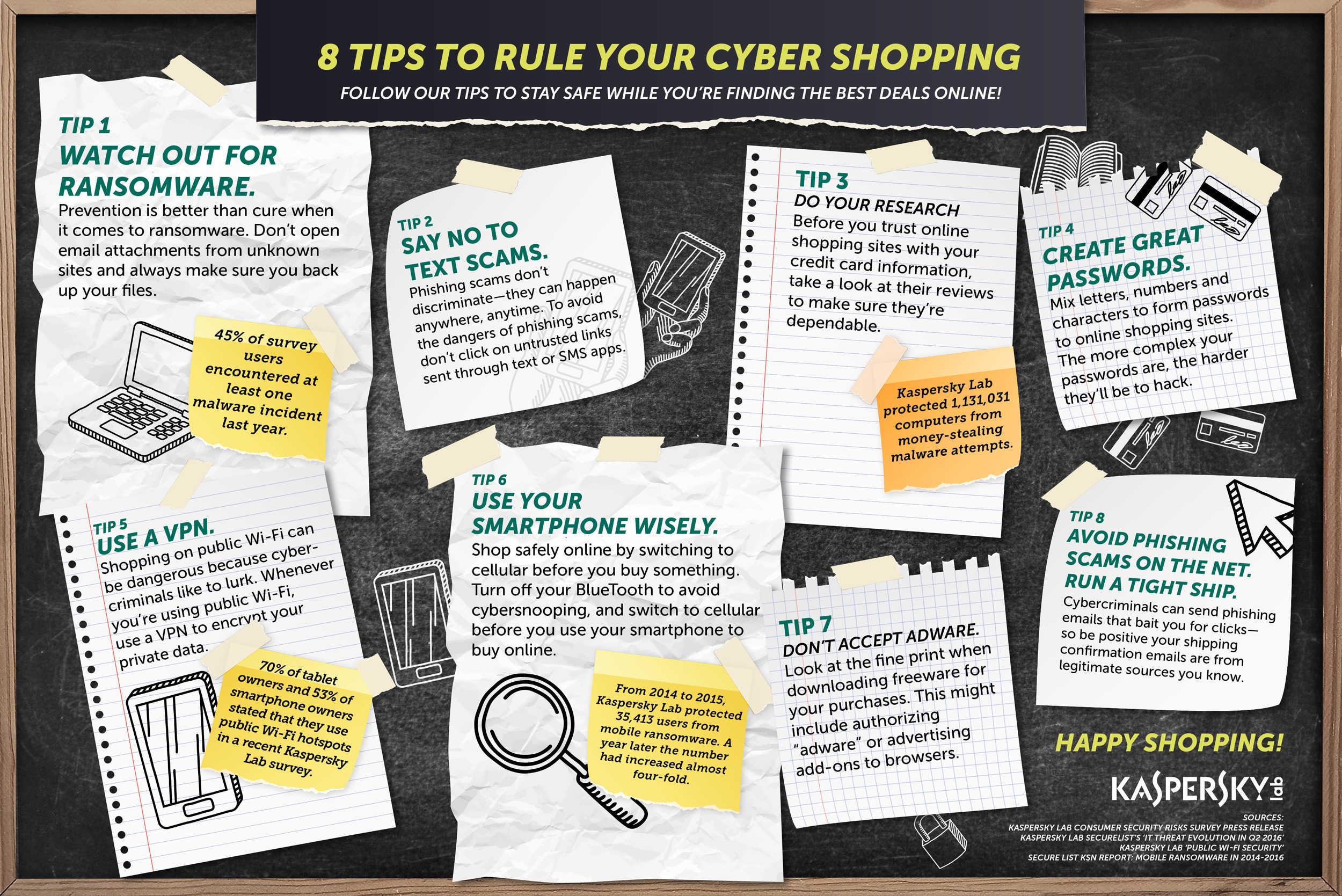No matter how advanced the technology and how powerful the security solution, there’s always a week link that can be exploited: the person in front of the screen. "As long as users can be fooled, phishing will continue to proliferate," says computer and network security company RSA.
Speaking about RSA, the company’s researchers have uncovered that there’s been a considerable rise in phishing attacks. RSA identified more than 1 million unique phishing attacks in the last 12 months, which averages out to 1 phishing attack every 30 seconds.
The country that’s most affected is the US, getting hit with 48% of all the global phishing volume. The US is also the country that hosts the most phishing attacks, with 60% of all global phishing attacks originating from the US.
Given the situation, Panda Security has come up with a good looking infographic that explains how to spot and avoid phishing attacks.

Via Panda Media Center. Original infographic in PDF format.
Panda Security’s infographic is a bit short, isn’t it? Luckily, I can point you towards a couple more:
Watch out for phishing attacks this holiday season
The number of phishing attacks always increases during the holiday shopping season, says a press release from renowned security company Kaspersky Lab.
“In 2014, we conducted some research into how the phishing threat landscape behaves itself in the holiday period, and discovered that the number of attacks against particular targets – payment systems and famous retail networks - increased during the Black Friday and Cyber Monday period,” said Andrey Kostin, senior web content analyst at Kaspersky Lab. “In 2015, the situation repeated itself and this makes us think that in 2016 it will happen again. So we urge users to be as cautious as possible when shopping online this season.”
Kaspersky Lab has 4 main tips on how to avoid becoming the victim of a holiday phishing scam:

In related news...
Since we're talking about shopping online, you may want to check out the 12 ways online stores trick you into spending more.
Speaking about RSA, the company’s researchers have uncovered that there’s been a considerable rise in phishing attacks. RSA identified more than 1 million unique phishing attacks in the last 12 months, which averages out to 1 phishing attack every 30 seconds.
The country that’s most affected is the US, getting hit with 48% of all the global phishing volume. The US is also the country that hosts the most phishing attacks, with 60% of all global phishing attacks originating from the US.
Given the situation, Panda Security has come up with a good looking infographic that explains how to spot and avoid phishing attacks.

Via Panda Media Center. Original infographic in PDF format.
Panda Security’s infographic is a bit short, isn’t it? Luckily, I can point you towards a couple more:
- How to Recognize and Avoid Phishing Attacks – an infographic released by data protection company Digital Guardian in honor of National Cyber Security Awareness Month.
- 6 Common Phishing Attacks and How to Avoid Them – an infographic released by Cloud Technology Solutions (CTS), a leading provider of Google Cloud solutions that transform organizations while reducing costs.
Watch out for phishing attacks this holiday season
The number of phishing attacks always increases during the holiday shopping season, says a press release from renowned security company Kaspersky Lab.
“In 2014, we conducted some research into how the phishing threat landscape behaves itself in the holiday period, and discovered that the number of attacks against particular targets – payment systems and famous retail networks - increased during the Black Friday and Cyber Monday period,” said Andrey Kostin, senior web content analyst at Kaspersky Lab. “In 2015, the situation repeated itself and this makes us think that in 2016 it will happen again. So we urge users to be as cautious as possible when shopping online this season.”
Kaspersky Lab has 4 main tips on how to avoid becoming the victim of a holiday phishing scam:
- If someone you don’t know sent you a link, don’t click it. If a friend sent you a link that seems suspicious, don’t risk opening it.
- If you’re on an unfamiliar or suspicious site, do not enter your credit card details. And keep in mind that if a deal seems too good to be true, it’s probably a scam.
- Don’t enter your credentials or confidential information unless you’ve double checked to make sure you’re on a genuine and not a fake website.
- Get a security solution that can protect against phishing attacks and financial fraud.

In related news...
Since we're talking about shopping online, you may want to check out the 12 ways online stores trick you into spending more.

























